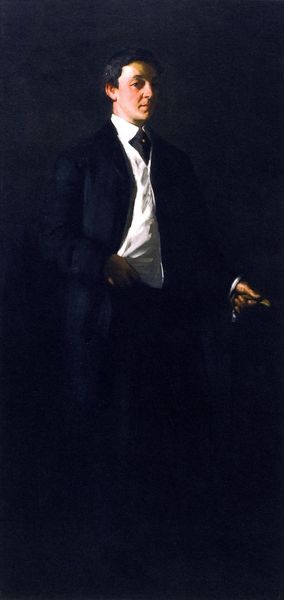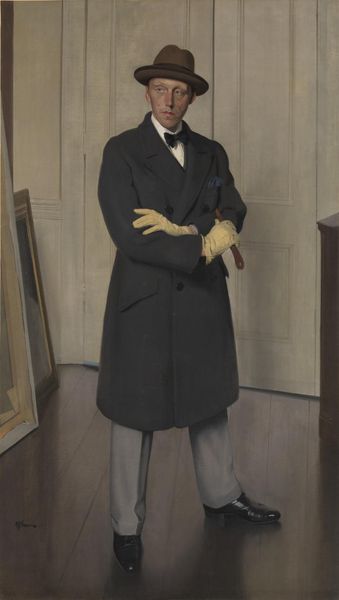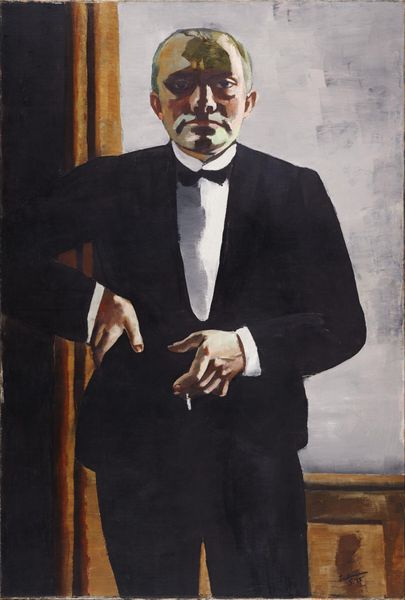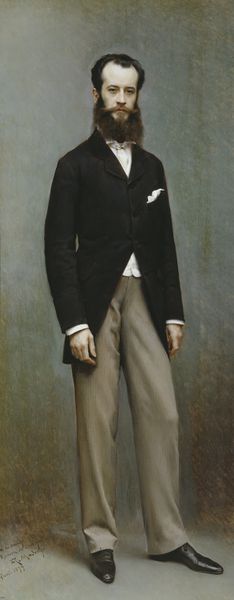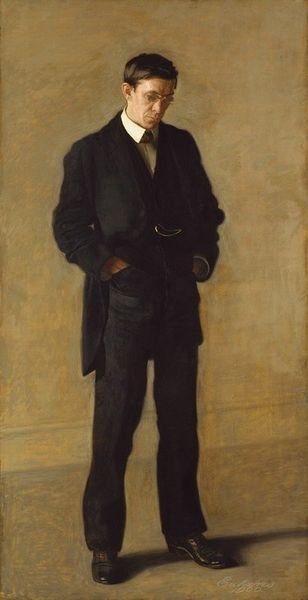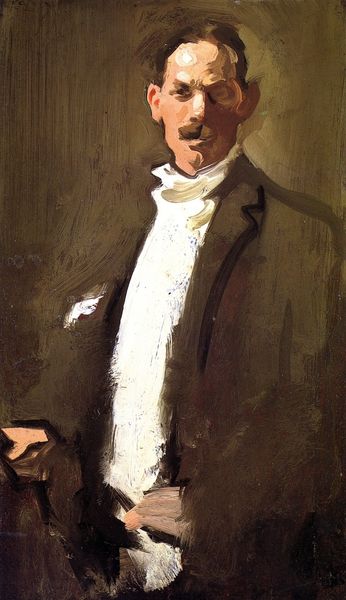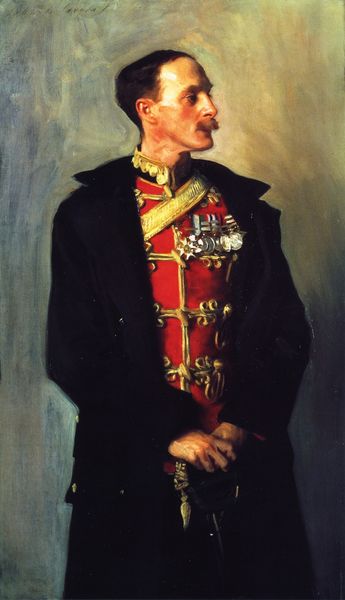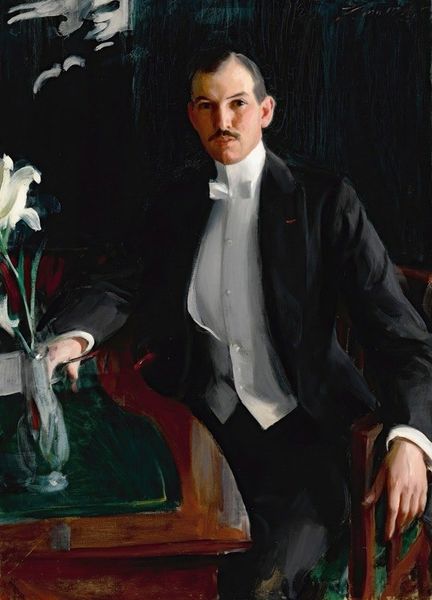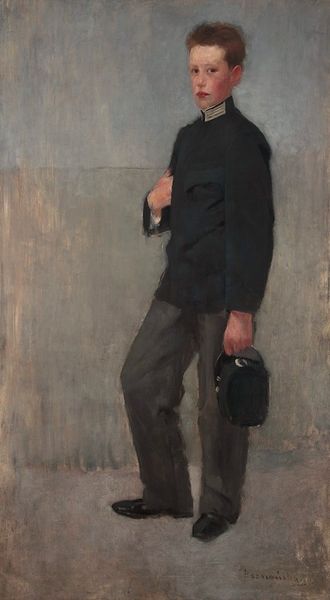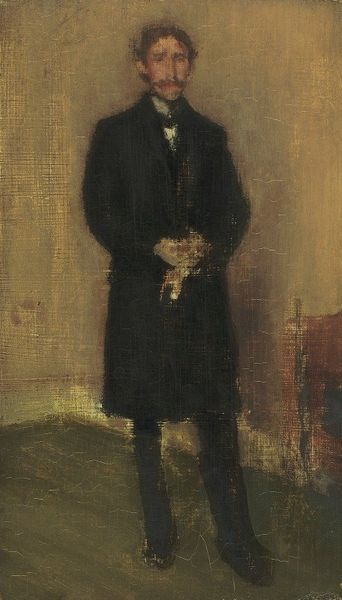
Copyright: Public Domain: Artvee
Editor: So, this is Giovanni Boldini's 1897 oil painting, "Portrait of James McNeill Whistler." There’s a subdued elegance here, almost theatrical. What stands out to you in this portrait? Curator: I'm drawn to the way Boldini captures Whistler’s pose – the hand to the head, the tilted gaze. It's not just a portrait, it’s an encoding of a persona. What feelings does it stir in you? Does it communicate his public identity versus his private thoughts, what's the connection with the viewer's own self image? Editor: I guess he looks a bit weary, but definitely self-aware, performing even. What symbols or visual cues point to that "encoding," as you call it? Curator: Notice the color palette, predominantly blacks and dark browns. The chair almost appears as a symbolic throne, yet somewhat fragile. The hat, the dark suit, the facial hair, are like brushstrokes in constructing the very recognizable artist figure. But it’s the gaze and hand gesture that suggest contemplation and interiority; these are powerful symbolic keys. Editor: That’s fascinating, that even the chair could speak to this symbolism of an artist’s construction of identity! Curator: It makes me wonder, doesn't it, about the psychological landscape Boldini is exploring here. Consider how these images embed themselves into collective memory. Does it influence future depictions and self-understanding in any way? It is almost archetypal. Editor: I never thought of a portrait operating like a myth or a symbol before. I’ll definitely look at portraiture differently from now on. Curator: Yes. That's the power of imagery. And something to carry forward in your art studies.
Comments
No comments
Be the first to comment and join the conversation on the ultimate creative platform.
